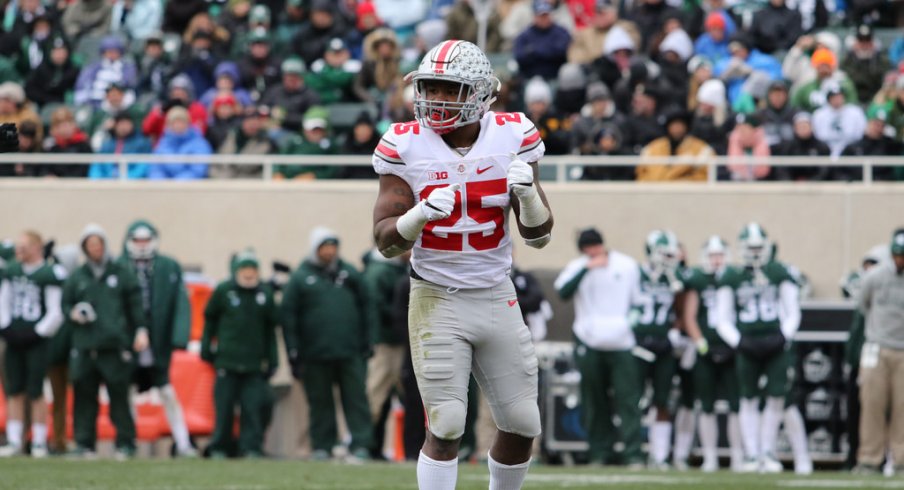After a strong showing in 2016, expectations for Ohio State redshirt sophomore running back Mike Weber are high heading into the fall. Where does his first year rank all-time, and can the success continue?
In case you didn’t know, let’s remind everyone of one thing: redshirt sophomore running back Mike Weber is very good.
The Detroit native rushed for 1,096 yards on 182 carries in 2016, averaging six yards per carry and 84 yards per game while finding the end zone nine times in 13 games. Compared to other Ohio State rushers historically, however, Weber’s 2016 campaign does not rank near the top in terms of yards, as he sits 29th all-time.
With that in mind, Weber’s 182 rushing attempts last season were the 12th fewest for a 1,000 yard rusher all-time in program history. The only player to rush for more yards in fewer attempts was Robert Smith in 1990, who rushed for 1,126 yards on 177 attempts.
Additionally, Weber averaged six yards per carry in 2016, which is 11th all-time for 1,000 yard rushers in program history. To put that into perspective, that is more than Eddie George’s Heisman season in 1995 and Archie Griffin’s 1975 Heisman campaign.
Weber’s stats may not jump off the page when you look at last year — his first real season in the backfield for the Buckeyes — but if they are compared to Scarlet and Gray running backs in the past, he has be excellent for Ohio State and defines what he likes to call “crispy”.
Overall, Ohio State’s rushing offense ranked 11th in the nation in 2016. That being said, Weber was not the main ball carrier for Ohio State last season, as J.T. Barrett notched 23 more carries last season and Curtis Samuel was also a threat on the ground with 97 carries on the year.
Both Barrett and Samuel put up numbers as they ran for a combined 1,616 yards and 17 touchdowns making up 21 percent of the Scarlet and Gray’s rushing touchdowns and a little over 50 percent of the yards on the ground in 2016.
One season later and Barrett remains in Columbus, but the Buckeyes have lost Samuel’s speed, as well as their top three receivers in Samuel, Noah Brown and Dontre Wilson — making Weber’s presence in the backfield more important.
Just glancing at the 2017 slate, Weber and the Buckeyes’ offense will take on five top-50 rushing defenses from last season, four of which are conference opponents.
| tEAM | rANK | yArds/Rush | Yards/Game |
|---|---|---|---|
| Army West Point | 18th | 3.88 | 121.2 |
| Nebraska | 43rd | 4.44 | 147.8 |
| Penn State | 48th | 3.84 | 151.3 |
| Iowa | 45th | 3.96 | 149.8 |
| Michigan | 15th | 3.22 | 119.2 |
With his second season on the horizon and draft stock at risk, Weber will need to continue to get better this fall in order to “wow” the NFL scouts into believing he is a first-round talent.
Weber must improve his pass-catching ability as well as his play-making ability when the blocking scheme breaks down.
If he can make these adjustments, and perform at a high level against this gauntlet of teams that lies ahead in 2017, Weber will assert himself as the alpha dog of the Scarlet and Gray backfield, and won’t leave any doubt about him heading into the 2018 NFL Draft.


